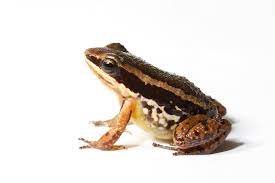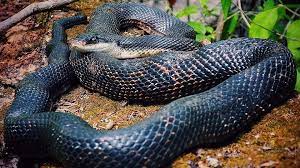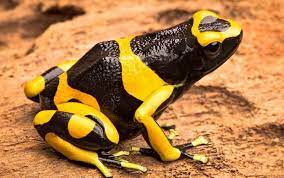In the intricate world of biology, the heart stands as a symbol of life and vitality, pumping the elixir of existence through an organism’s veins. While human hearts are renowned for their four-chambered design, the animal kingdom is a testament to the extraordinary diversity in anatomical adaptations. In this exploration, we unveil the remarkable realm of “Animals With Three-Chambered Hearts,” a distinctive cardiac structure that fuels the life cycles of specific species.
Table of Contents
Unlike the mammalian four-chambered heart, these organisms possess a cardiac configuration that features three chambers, blending the efficiency of a four-chambered heart with the functional simplicity of a two-chambered one. Join us on a captivating journey through the intricacies of this specialized heart anatomy, delving into the evolutionary marvels and survival advantages that underscore the wonder of life beating at the core of these remarkable creatures.
Overview of the Circulatory System and its Importance in Animals:
The circulatory system is a vital biological framework that facilitates the transportation of oxygen, nutrients, hormones, and other essential substances throughout an organism’s body. It is a network of blood vessels, the heart, and blood, working in harmony to support metabolic activities and maintain overall physiological balance.
The circulatory system plays a crucial role in ensuring the delivery of oxygen and nutrients to cells, aiding in waste removal, and helping regulate body temperature. It is a cornerstone of life, ensuring the survival and functionality of various animal species. Understanding the circulatory system and its diverse adaptations, including three-chambered hearts in certain animals, provides invaluable insights into the mechanics of life and the evolutionary strategies that have shaped the animal kingdom.
Understanding the Circulatory System:
The circulatory system is a complex and intricate network responsible for the efficient transportation of blood, nutrients, oxygen, hormones, and waste products throughout an animal’s body. It comprises the heart, blood vessels (arteries, veins, and capillaries), and blood itself.
The heart acts as the central pump, propelling oxygenated and deoxygenated blood to and from various organs and tissues. Arteries carry oxygenated blood away from the heart, while veins transport deoxygenated blood back to the heart. Capillaries facilitate the exchange of gases and nutrients between blood and tissues. This circulatory cycle is essential for maintaining an organism’s health, enabling proper growth, development, and overall physiological functions.
The Anatomy and Function of a Three-Chambered Heart:
A three-chambered heart is a cardiac structure found in certain animals, representing a cardiac adaptation that balances functional efficiency and simplicity. Unlike a four-chambered heart, which includes two atria and two ventricles, a three-chambered heart typically comprises two atria and one ventricle.
Oxygenated and deoxygenated blood mix to a certain extent in the single ventricle before being pumped out to the circulatory system. This heart design is commonly found in amphibians, reptiles, and some fish. The anatomy and functioning of a three-chambered heart provide a unique insight into the adaptations that enable specific animals to thrive in their respective environments.
Frogs and Toads (Order Anura):

Frogs and toads, members of the order Anura, exhibit a fascinating cardiovascular system with a three-chambered heart. This heart consists of two atria and a single ventricle. During circulation, oxygenated blood from the lungs and deoxygenated blood from the body mix within the ventricle before being pumped throughout the body.
Despite this mixing, frogs and toads have evolved mechanisms to improve oxygenation, like a process called buccal pumping, where they force air into their lungs to enhance gas exchange. This adaptation allows them to survive both in aquatic and terrestrial environments, showcasing the resilience of their circulatory system.
Turtles (Order Testudines):

Turtles, belonging to the order Testudines, possess a unique cardiovascular system characterized by a three-chambered heart. Their heart comprises two atria and a partially divided ventricle, allowing for some separation of oxygenated and deoxygenated blood. Although not as efficient as a four-chambered heart, this adaptation facilitates better oxygenation compared to other three-chambered hearts.
When turtles submerge in water, certain species can divert more deoxygenated blood to the lungs to optimize oxygen uptake. This ability demonstrates their incredible ability to adapt to diverse environments and highlights the evolutionary ingenuity of their circulatory system.
Salamanders (Order Urodela):

Salamanders, a fascinating group of amphibians in the order Urodela, possess a three-chambered heart consisting of two atria and a single ventricle. This cardiovascular system allows for a degree of separation between oxygenated and deoxygenated blood, contributing to efficient oxygen transport. While not as refined as a four-chambered heart, this adaptation suits their amphibious lifestyle.
Salamanders can adjust blood flow and circulation patterns based on their environment, optimizing oxygen delivery. Their circulatory system highlights the remarkable balance between efficiency and adaptation to different habitats, making them successful inhabitants of diverse ecosystems.
Snakes (Order Serpentes):

Snakes, fascinating reptiles belonging to the order Serpentes, possess a three-chambered heart—a testament to their evolutionary adaptation. This heart structure consists of two atria and a single ventricle, facilitating adequate circulation throughout their elongated bodies. Despite the partial mixing of oxygenated and deoxygenated blood, snakes have efficient adaptations to optimize oxygen transport.
This includes adjustments in heart rate and selective distribution of oxygen to vital organs, showcasing the versatility of their circulatory system. Their ability to thrive in various environments, from arid deserts to lush rainforests, speaks to the efficiency and adaptability of their cardiovascular setup.
Lizards (Order Squamata):

Lizards, diverse and captivating members of the order Squamata, typically possess a three-chambered heart. Their cardiovascular system consists of two atria and a single ventricle, allowing for a degree of separation between oxygenated and deoxygenated blood. Although not as efficient as a four-chambered heart, this adaptation supports their active and diverse lifestyles.
Lizards demonstrate remarkable cardiovascular plasticity, adjusting blood flow and circulation patterns based on their activity levels and environmental conditions. This cardiovascular versatility allows them to adapt to a variety of habitats, from deserts to forests, showcasing the successful balance between oxygen transport efficiency and evolutionary adaptation within the reptilian world.
Crocodilians (Order Crocodilia):

Crocodilians, a group including crocodiles and alligators, possess a cardiovascular system with a partially divided ventricle, creating a structure that is intermediate between a three-chambered and four-chambered heart. This adaptation allows for some separation of oxygenated and deoxygenated blood, contributing to their semi-aquatic lifestyle.
During diving or submersion, a special shunting mechanism enables more efficient oxygen usage, directing oxygenated blood to vital organs. This evolutionary innovation showcases the remarkable adaptability of their circulatory system, essential for their predatory lifestyle and the ability to survive in various aquatic habitats.
Newts (Family Salamandridae):

Newts, belonging to the family Salamandridae, possess a three-chambered heart, characterized by two atria and a single ventricle. This structure allows for some separation of oxygenated and deoxygenated blood, enhancing oxygen transport in their semi-aquatic habitats.
During terrestrial phases, they adjust their circulatory patterns to optimize oxygen delivery, showcasing their adaptability to diverse environments. Newts, with their efficient and versatile circulatory system, highlight the evolutionary success of amphibians in different ecosystems, serving as a vital component of the biodiversity of their habitats.
Advantages and Limitations of Three-Chambered Hearts:
Three-chambered hearts offer a balance between the efficiency of a four-chambered heart and the simplicity of a two-chambered heart. One of the advantages lies in its ability to optimize oxygen delivery and blood circulation while requiring less energy compared to a four-chambered heart.
However, a significant limitation is the potential mixing of oxygenated and deoxygenated blood in the single ventricle, reducing the overall efficiency of oxygen distribution. The evolutionary advantages and limitations of a three-chambered heart are fascinating aspects that shed light on the remarkable adaptations honed through millennia of evolution.
Evolutionary Implications and Adaptations:
The presence of a three-chambered heart in certain animals is a testament to evolutionary adaptation and survival strategies. Evolution has favored this cardiac structure in species that can thrive with a certain level of mixing between oxygenated and deoxygenated blood. It is an example of how organisms adapt to their environment, balancing energy efficiency and physiological requirements to maximize their chances of survival and reproduction.
The evolutionary implications of a three-chambered heart extend to understanding the selective pressures that have shaped various physiological adaptations in the animal kingdom.
Impact on Animal Behavior and Physiology:
The presence of a three-chambered heart has a profound impact on the behavior and physiology of animals. It influences their energy expenditure, metabolic rates, and the efficiency of oxygen utilization.
Animals with three-chambered hearts often exhibit behaviors and physiological adaptations that align with this cardiac structure, optimizing their activities to accommodate the limitations and advantages of their circulatory system. Understanding how the cardiac anatomy affects animal behavior and physiology provides valuable insights into the interplay between form and function in the biological world.
Final Words:
The circulatory system, with its diverse heart structures, stands as a testament to the marvels of evolution and the intricacies of life. From the simplicity of a two-chambered heart to the efficiency of a four-chambered heart, and the balance of a three-chambered heart, each cardiac design is a result of countless years of evolutionary fine-tuning.
Understanding these adaptations and their implications allows us to appreciate the beauty of nature’s engineering and provides a foundation for advancements in medicine and physiology. The study of circulatory systems across various animal species offers a profound glimpse into the mechanisms that sustain life and the awe-inspiring diversity that defines our natural world.
Reference:
- https://www.biologyonline.com/dictionary/three-chambered-heart
- https://byjus.com/question-answer/classify-the-following-based-on-number-of-chambers-in-their-heart-rohu-scoliodon-frog-salamander-flying-lizard-king-cobra-crocodile-ostrich-pigeon-bat-whale/
- https://www.toppr.com/ask/question/which-of-the-following-has-a-3-chambered-heart

Jeevan Kodiyan
An animal enthusiast with an interest in zoology, studying the behavior and activities of animals in the wild habitat. I work on research projects related to species conservation and endangered species protection. I also leverage zoology to become an educator, educating others about the importance of protecting our natural environment and the beauty of animals in their natural habitats.









